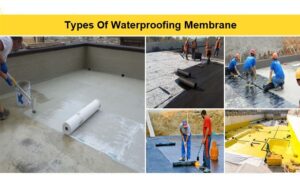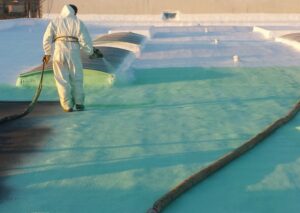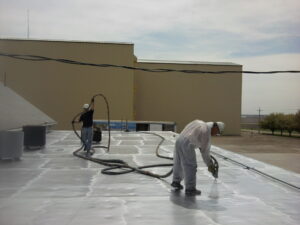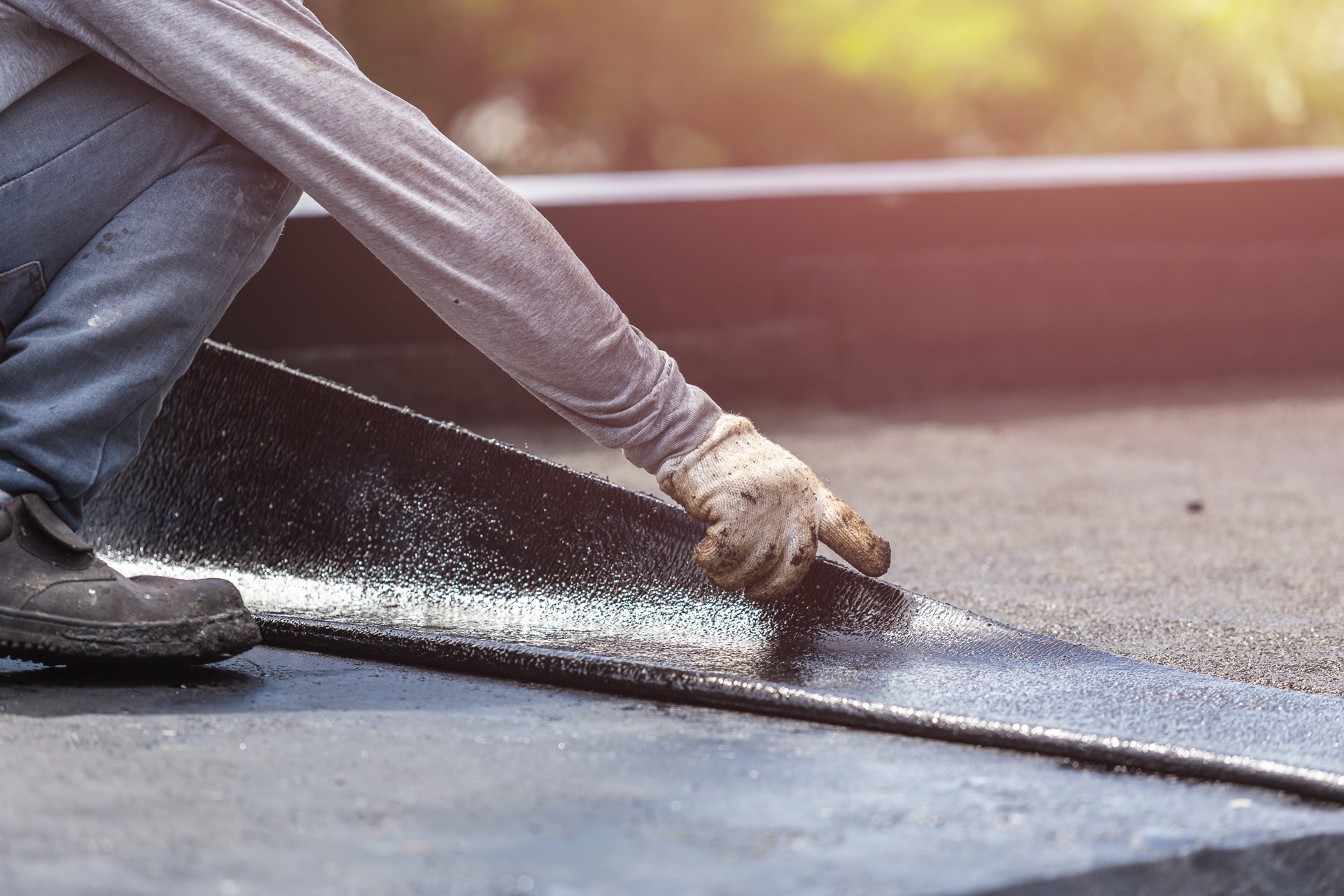Call us: +971 507197652
In the UAE’s extreme weather, protecting your property is about more than design and aesthetics — it’s about durability and smart construction. Among the many maintenance tasks every property owner must consider, one question comes up often: how to waterproof flat roof UAE. Whether you’re dealing with residential villas, commercial buildings, or industrial spaces, waterproofing your flat roof is one of the most important investments you can make.
Flat roofs are a common architectural choice in the UAE, admired for their modern style and practical use of space. However, they are also more vulnerable to water leakage and heat damage if not properly protected. This guide will help you understand why waterproofing is crucial, what materials and techniques work best, and how to make the right choice for long-term results.

Why Flat Roof Waterproofing Is Crucial in the UAE
When exploring how to waterproof flat roof UAE, it’s essential to first understand why it matters so much. The UAE’s climate is unlike most parts of the world — extreme heat, UV exposure, high humidity, and sudden rainfall all take a toll on building materials.
-
Protection from Heat and UV Rays:
The intense sunlight and temperatures that can exceed 45°C cause materials to expand and contract. Over time, this leads to cracks and weak spots on the roof surface. -
Resistance to Heavy Rain:
Rain might be infrequent in the UAE, but when it comes, it’s sudden and powerful. Flat roofs without proper drainage and waterproofing can collect standing water, leading to seepage and leaks. -
Prevention of Mold and Structural Damage:
Water penetration can damage concrete, cause mold growth, and even weaken the internal structure. Waterproofing forms a shield against such damage. -
Energy Efficiency:
A properly waterproofed flat roof helps maintain indoor temperature, reducing cooling costs during the hot summer months.
Simply put, learning how to waterproof flat roof UAE is not just about preventing leaks — it’s about preserving your property’s life, strength, and value.
Common Waterproofing Challenges in the UAE
Flat roofs face unique issues that make waterproofing a technical process rather than a simple coating job. These include:
-
Thermal Expansion and Contraction: Daily temperature fluctuations cause cracks.
-
UV Degradation: Sun exposure weakens certain materials.
-
Poor Drainage: Many flat roofs lack proper slope for water flow.
-
Improper Installation: Low-quality materials or unskilled labor often lead to premature failure.
Knowing these challenges helps property owners understand how to waterproof flat roof UAE effectively — by choosing the right materials, systems, and maintenance routines.
Types of Waterproofing Systems for Flat Roofs
When researching how to waterproof flat roof UAE, you’ll come across different waterproofing methods. Each system offers distinct advantages depending on your budget, property type, and environmental exposure.

1. Bituminous Membrane Waterproofing
A popular choice in the UAE, bituminous membranes are heat-applied sheets that form a continuous, watertight layer.
Advantages: Durable, flexible, and UV-resistant.
Best For: Villas, warehouses, and commercial buildings.

2. Liquid-Applied Membrane
This method uses a liquid waterproofing material (like polyurethane or acrylic) that’s applied with rollers or sprays. Once cured, it forms a seamless layer.
Advantages: Easy to apply, no joints, and ideal for irregular surfaces.
Best For: Roofs with complex shapes or existing tiles.

3. Cementitious Waterproofing
This is a cost-effective method involving a cement-based coating mixed with waterproofing compounds.
Advantages: Easy to install, excellent adhesion to concrete.
Best For: Internal wet areas like bathrooms or utility rooms, not exposed roofs.

4. Polyurethane Waterproofing
One of the most advanced waterproofing systems available today. It offers exceptional flexibility and resistance against harsh weather.
Advantages: Seamless, UV-resistant, and long-lasting.
Best For: Flat roofs exposed to high temperatures and sunlight.

5. Combo Waterproofing System
For those who want the ultimate protection, combo systems combine both thermal insulation and waterproofing in one layer.
Advantages: Energy-efficient, long-lasting, and maintenance-free.
Best For: Villas and commercial buildings in Dubai’s extreme climate.
These systems all contribute to the goal of how to waterproof flat roof UAE — ensuring a watertight, energy-efficient, and durable surface that can withstand desert conditions.
Step-by-Step Guide: How to Waterproof Flat Roof UAE
If you’re wondering how to waterproof flat roof UAE, here’s a simplified step-by-step process most professionals follow:
-
Inspection and Cleaning:
Remove all dirt, debris, and loose materials. Identify cracks, joints, or damaged sections. -
Surface Preparation:
The roof must be clean, dry, and smooth for effective adhesion of waterproofing materials. -
Crack and Joint Treatment:
Fill cracks and seal joints using suitable sealants or repair compounds. -
Primer Application:
Apply a primer layer to improve bonding between the surface and waterproofing membrane. -
Waterproofing Application:
Apply the chosen system (bituminous, liquid membrane, or combo system) carefully to cover all areas. -
Protection Layer:
Some systems require an additional protective layer or screed for UV and impact protection. -
Testing and Inspection:
After curing, professionals conduct pond tests or inspections to ensure complete sealing.
By following these steps, professionals ensure that your flat roof remains leak-proof and resistant to damage — the essence of how to waterproof flat roof UAE effectively.
How to Choose the Right Waterproofing Contractor in UAE
The success of your waterproofing project depends largely on who does the job. Knowing how to waterproof flat roof UAE is one thing — finding the right contractor is another.
Here’s what to look for:
-
Experience in UAE Climate: Local expertise ensures that materials and methods suit desert conditions.
-
Use of Certified Materials: Ensure that the company uses branded, tested, and eco-friendly products.
-
Warranty and After-Sales Support: A reliable company offers maintenance and guarantees.
-
Customer Reviews and Track Record: Check their past projects and client feedback.
-
Technical Knowledge: A professional contractor understands not just waterproofing, but also drainage, insulation, and structural compatibility.
Maintenance Tips After Waterproofing
Waterproofing isn’t a one-time task. To keep your roof in great condition, follow these maintenance tips:
-
Inspect Every Six Months: Look for early signs of cracks or discoloration.
-
Clean Drainage Areas: Remove debris to prevent water pooling.
-
Avoid Heavy Foot Traffic: Limit movement on the waterproofed surface.
-
Check After Rainfall: Inspect for ponding or surface damage.
-
Recoat When Necessary: Over time, renew the protective topcoat as recommended.
These steps complement everything you learn about how to waterproof flat roof UAE, ensuring long-term success and cost efficiency.

Cost of Waterproofing Flat Roofs in UAE
The cost depends on several factors — roof size, materials used, labor, and method. Generally, prices range from AED 25 to AED 75 per square meter for quality work.
While some may be tempted by cheaper options, it’s important to remember that inferior waterproofing can lead to major repairs later. The true cost of how to waterproof flat roof UAE lies in the balance between quality materials and skilled workmanship.
Environmental Benefits of Roof Waterproofing
Learning how to waterproof flat roof UAE isn’t just about protection — it’s also an eco-friendly decision. A properly sealed and insulated roof reduces energy consumption by maintaining cooler indoor temperatures. It also minimizes waste by extending the lifespan of building materials. In a sustainability-driven country like the UAE, this makes waterproofing both a smart and responsible choice.
Common Mistakes to Avoid
When implementing how to waterproof flat roof UAE, avoid these common errors:
-
Skipping surface preparation before applying membranes.
-
Choosing low-quality or non-UV-resistant materials.
-
Ignoring slope and drainage design.
-
Hiring unqualified contractors without proper certification.
-
Neglecting post-installation inspections.
A professional approach prevents these issues and ensures long-lasting protection for your roof.
Future of Roof Waterproofing in UAE
With the UAE’s rapid urban growth, modern waterproofing solutions are evolving fast. From nanotechnology coatings to self-healing membranes, innovation continues to redefine how to waterproof flat roof UAE effectively. Sustainable materials, heat-reflective coatings, and integrated insulation systems are becoming the new industry standards.

Summary
Understanding how to waterproof flat roof UAE is essential for every property owner. The UAE’s harsh climate demands high-quality materials, expert installation, and regular maintenance to keep buildings safe and durable. From bituminous and liquid membranes to advanced combo systems, there are multiple ways to ensure long-lasting protection.
A well-waterproofed roof not only prevents leaks but also improves energy efficiency, enhances property value, and ensures comfort throughout the year.
When it comes to how to waterproof flat roof UAE, choosing a reliable partner makes all the difference.
Seal Seven Insulation Contracting L.L.C. is among the best waterproofing companies in Dubai, known for precision, innovation, and superior craftsmanship. With years of experience and a professional team of experts, Seal Seven delivers tailored waterproofing solutions that withstand the UAE’s toughest conditions.
Whether you need flat roof protection, combo waterproofing, or complete building maintenance, Seal Seven ensures lasting performance and peace of mind. Their commitment to quality and customer satisfaction makes them the preferred choice for residential, commercial, and industrial projects across the UAE.
Conclusion
Learning how to waterproof flat roof UAE is about more than following a process — it’s about safeguarding your investment.
By choosing the right system, using the right materials, and partnering with trusted experts like Seal Seven, you can protect your property from leaks, heat, and future damage.
In Dubai’s challenging climate, effective waterproofing isn’t optional — it’s essential for every strong, sustainable building.
